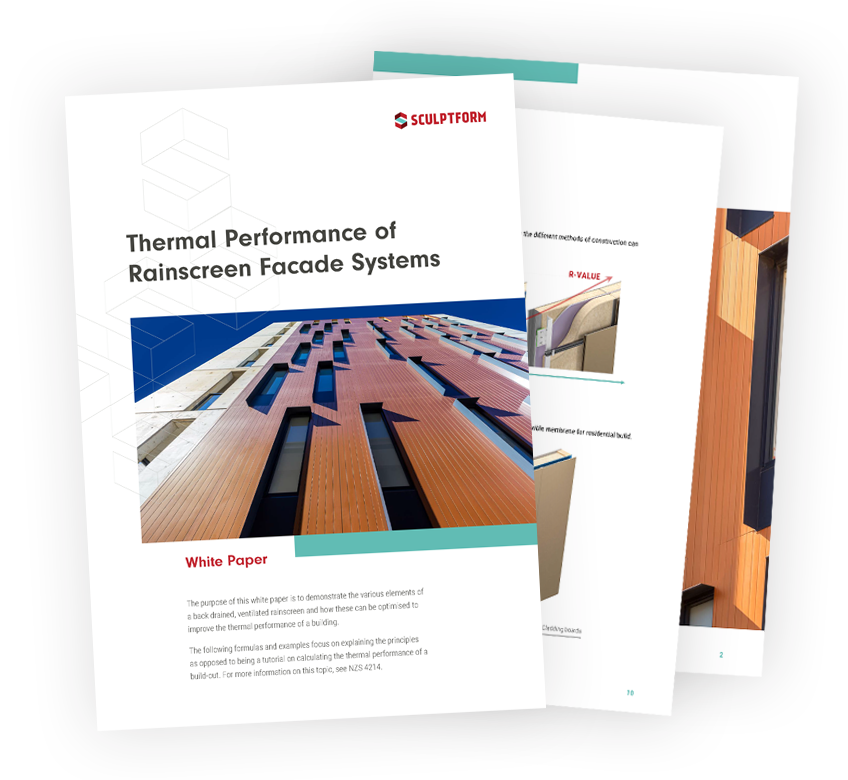1 May 2025

Building a rainscreen is one of the most effective ways to protect modern buildings against harsh weather, improve thermal performance, and extend facade lifespan.
In this guide, we’ll explain how to build a rainscreen, explore different system types, and break down the key components involved in creating a high-performance rainscreen wall.

A rainscreen facade is a two-layer construction system designed to shield a building from moisture while allowing it to breathe:
Inner wall: The load-bearing, insulated wall.
Outer cladding layer: Deflects rain and moisture while creating a cavity that prevents water from penetrating the building structure.
This cavity helps drain water and allows airflow, reducing condensation and improving thermal efficiency.

Types of Rainscreen Systems Explained
Three main types of rainscreen systems are commonly used in modern architecture:
Drained and Back Ventilated Rainscreen
Designed to drain most rainwater through the outer cladding.
Uses baffles and limited joint widths to block wind-driven rain.
Cavity promotes rapid evaporation and drainage.
Vented Rainscreen
Open at the bottom, closed at the top.
Focuses on draining moisture to prevent condensation.
Common with face-sealed cladding systems.
Pressure Equalised (PE) Rainscreen
Allows controlled airflow between the inside and outside of the cavity.
Equalises pressure across the cladding, preventing water ingress through joints.
For this blog, we'll focus on drained and vented rainscreens, the most popular systems in facade design.
A rainscreen wall assembly typically includes these six critical components, installed in sequence:
Structural wall: The building’s main load-bearing layer.
Studs or noggings: Timber or steel framework to attach insulation and cladding.
Insulation layer: Mineral wool batts, foam sheathing, or spray foam to enhance thermal performance.
Weather protection membrane: A continuous barrier preventing water ingress while allowing vapour to escape.
Air cavity: A ventilated gap that supports drainage and airflow.
Cladding: The visible outer layer protecting against rain and adding design appeal.

Here's a simplified walkthrough of the rainscreen installation process:
Ensure the load-bearing wall is clean, even, and structurally sound.
Create a robust framework using timber or steel, aligned vertically or horizontally to support the cladding system.
Fit insulation boards or batts tightly between the studs to prevent thermal bridging.
Cover the entire facade, overlapping joints and sealing edges with tape to create a continuous barrier.
Fix vertical battens or brackets to support the cladding and ensure airflow behind it.
Fix the rainscreen cladding securely using concealed or exposed fixings, depending on design preference.
When designing a rainscreen facade, keep in mind:
Thermal performance: Choose insulation and cavity depth to meet energy codes.
Weatherproofing: Ensure membrane and joint details prevent water ingress.
Fire compliance: Select fire-rated materials for safety and code compliance.
Wind loads and spans: Engineer fixings and substructure to handle wind pressures.
Aesthetic appearance: Explore various cladding profiles, finishes, and colours.
 Introducing Velo Facades
Introducing Velo FacadesSustainable building practices and regulatory compliance are paramount in the construction landscape. With advancements to enhance thermal performance, mitigate condensation risks and reduce water leaks, the industry is ripe for innovative solutions that not only meet, but exceed these evolving standards.
Introducing Velo Facades, a high-performance envelope solution featuring Sculptform’s signature concealed fixing aluminium rainscreen cladding.

Interested in the science behind rainscreen facades?
Download: Thermal Performance of a Rainscreen Facade System.
Understand how back drained and ventilated systems can optimise energy performance.

To protect the building structure from moisture, improve thermal performance, and extend facade lifespan.
Options include aluminium, timber, terracotta, fibre cement, and composite panels.
